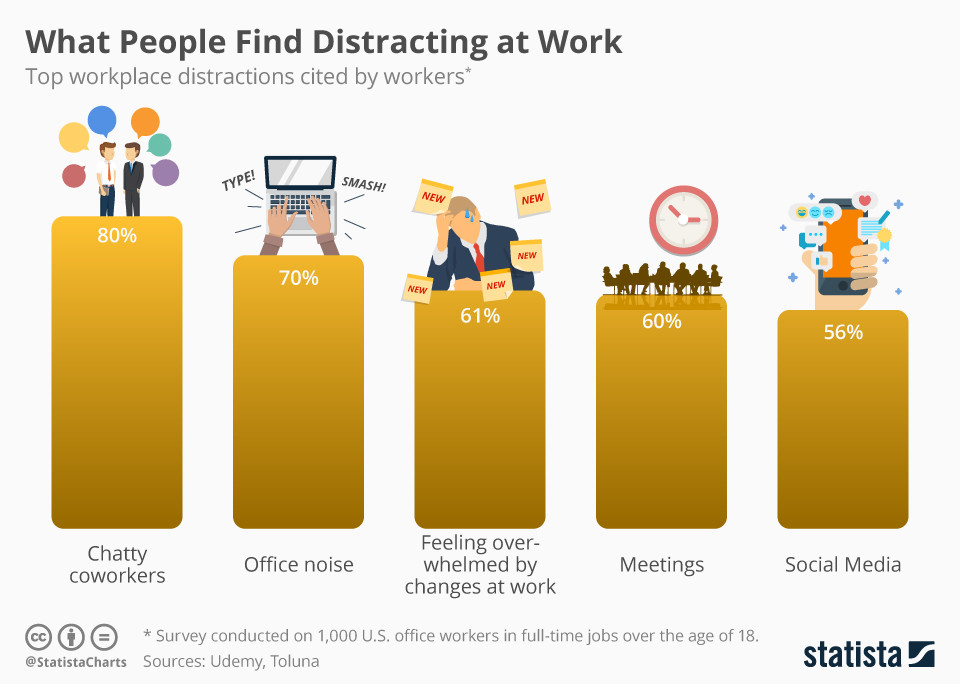Die Ablenkungen am Arbeitsplatz betreffen nicht nur, wo Sie arbeiten, sondern auch mit wem Sie zusammenarbeiten. Laut einer neuen Umfrage von Udemy und Toluna berichten 80 Prozent der Befragten, dass sie von geschwätzigen Mitarbeitern abgelenkt werden, der Ablenkung am Arbeitsplatz Nummer eins. Bürolärm ist die am zweithäufigsten genannte Arbeitsplatzstörung, wobei sieben von zehn Befragten Lärm als Hauptlastfaktor in ihrem täglichen Arbeitsablauf anführen. Unten auf der Liste, aber immer noch ein Problem, waren Social Media. Die Hälfte der Befragten ist der Meinung, dass die persönliche Nutzung von Social Media eine Störung für sie am Arbeitsplatz ist.
Der Bericht ergab, dass die Verringerung der Ablenkungen am Arbeitsplatz die Produktivität, Motivation, das Selbstvertrauen und das allgemeine Wohlbefinden der Mitarbeiter erhöht. Da Open-Office-Pläne an modernen Arbeitsplätzen in Mode gekommen sind, haben neue Studien die Wirksamkeit bei der Förderung einer kollaborativen Umgebung in Frage gestellt, da sich viele über ihre Ablenkung und ihren Missbrauch beschweren.
The top workplace distractions involve not just where you work, but who you work with. According to a new poll by Udemy and Toluna, 80 percent of people report being distracted by chatty coworkers, the number one office place distraction. Office noise is the second most cited workplace disturbance, with seven out of ten respondents citing noise as a top bother in their day-to-day workflow. Lower on the list, but still a problem, was social media. Half of the people surveyed thought that personal social media use was a disturbance to them at work.
The report found that reducing workplace distractions increased workers productivity, motivation, confidence, and overall happiness. As open office plans have come into vogue in the modern workplace, new studies have brought into question how effective they are at fostering a collaborative environment as many complain of their distractions and misuse.


